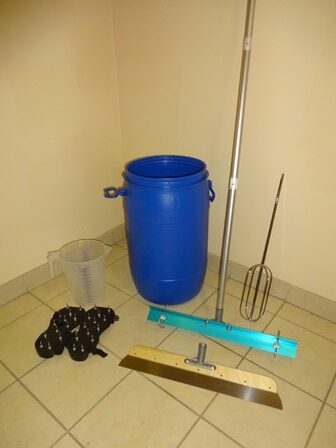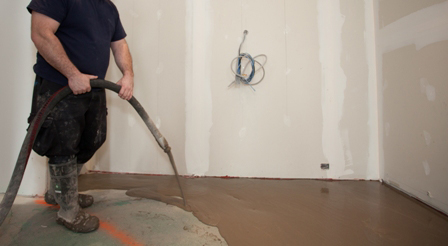The tile industry has known the term “self-leveling” and its capabilities for some time, but as with other things in life, this term is changing. The new title better reflects the actual functionality and composition of the product.
The long-standing and well-known term, “Self-Leveling Underlayment “or “SLU” will now be known as “Flowable Hydraulic Cement Underlayment” or FHCU which doesn’t roll off the tongue as easily as its predecessor, but we will adapt. Interestingly, during a recent class I was conducting, the discussion focused on getting the floor flat and, of course, FHCU was one of the solutions. A general agreement determined that the acronym FHCU was too cumbersome and could be replaced with something simple such as “FU” for “Flowable Underlayment.” Let’s wait and see if this gains any traction.


The standards for FHCU, including the interior installation (ANSI A108.21) and the material specification (ANSI A118.16), are easily located in the back of each section respectively in the current edition of the ANSI A108/118 manual. This placement is due to each of them being the latest additions to the ANSI standard.
The A118.16 Introduction states: “Flowable Hydraulic Cement Underlayment – Self Leveling Underlayment mortars are intended for use in flattening horizontal substrates of minor irregularities in preparation for installation of various types of tile and stone. They may also be used to level a substrate, but this is not their primary use. These mortars are typically formulated to be applied in thicknesses from featheredge up to 1.5” (38 mm). Products are either barrel mixed and manually poured or mechanically mixed and pumped. Before the mortar takes an initial set, it is raked or pushed and then smoothed to remove surface tension and improve flatness.”
Section 1.0 Scope states: “This specification covers ordinary Portland cement (OPC)-based and calcium aluminate-based Flowable Hydraulic Cement Underlayment / Self-Leveling Underlayment when used as a substrate for the installation of ceramic tile, manufactured stone, and natural stone in interior applications.”
One of the more critical requirements of FHCU is the installation of the primer provided by the same manufacturer as the powder. Unless the FHCU manufacturer states otherwise, always use the recommended primer. This liquid-applied product is rolled or broomed into the surface of the substrate and serves several purposes. It acts as a bonding agent between the clean substrate and the FHCU, it equalizes the moisture absorption rate of the substrate, and relieves surface tension of the FHCU so that it will flow more easily and further.
Another very important requirement of installation is to be absolutely certain that all cracks, crevasses, and pinholes in the substrate and the adjoining walls are completely sealed with a caulking/sealant or some other product to block the entry of the FHCU into adjacent areas.


Additionally, in order to provide an adequate amount of movement accommodation, the application of a product from the masonry trade called “sill sealer” is suggested. It is normally 1/4” in thickness and comes in a roll that attaches to the wall structure with staples, tape, or adhesive. Once the FHCU has been placed and dried, the sill sealer is easily trimmed flush to the surface with a utility blade.
This has been a really quick overview of this product. For more information, contact your manufacturer of choice for all the details.
SLU or FHCU is here to stay, and can be an excellent and reasonably inexpensive way to get a floor flat in preparation for the installation of large-format tile (any tile 15” or longer). Do it right the first time and save yourself a lot of time and expense.


Scott Carothers
Scott Carothers is the Acdemic Director for the Ceramic Tile Education Foundation (CTEF) and is responsible for the creation of the Certified Tile Installer (CTI) program, and is involved in the creation of the Advanced Certifications for Tile Installers (ACT) program as well as providing training to others in the tile industry.
Carothers has been involved in the ceramic tile industry for nearly 40 years and was the owner of a successful retail and installation firm prior to CTEF. He has served as President and Chairman of the Board of the National Tile Contractors Association (NTCA), Chairman of the NTCA Technical Committee, was named the NTCA Tile Person of the Year in 2005, and the NTCA Ring of Honor recipient in 2013. He is a voting member of the ANSI and the TCNA Handbook committees.







